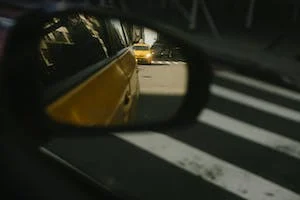Car blind spots are areas around a vehicle that cannot be seen by the driver through the car’s mirrors or windows. These blind spots pose a serious risk to drivers and can cause accidents if not managed properly.
Blind spots can be caused by the design of the vehicle, such as thick pillars or small windows, or they can be created by objects in the driver’s line of sight. Blind spots can make it difficult for drivers to see other vehicles, pedestrians, or obstacles, particularly when changing lanes or turning.
Thus, in this article, we will discuss what car blind spots are, where they are located, how to identify them, and what you can do to reduce the risk of accidents associated with them.
What are car blind spots?
Car blind spots refer to areas around a vehicle that are difficult for the driver to see from their normal driving position. Blind spots are caused by obstructions to the driver’s line of sight, such as the vehicle’s design, A-pillars, or other objects in and around the car.
Where are car blind spots located?
The location of blind spots can vary depending on the type of vehicle, but generally, they are located behind the driver’s seat on both sides of the car. Blind spots can be particularly large on larger vehicles, such as trucks or SUVs, and on cars with a more curved or sloping design.
How to identify car blind spots?
To identify blind spots, drivers should check their mirrors and physically turn their heads to check over their shoulder when changing lanes or merging. It is important to remember that even if you cannot see another vehicle or pedestrian, they may still be there, so drivers should exercise caution and use their best judgment when driving.
How can you reduce the risk of accidents because of car blind spots?
To reduce the risk of accidents associated with blind spots, there are a few things drivers can do.
First, drivers can adjust their mirrors properly to minimize blind spots. The driver’s side mirror should be adjusted so that the side of the car is just barely visible, and the rearview mirror should be adjusted to show as much of the road behind the car as possible.
Second, drivers can be proactive by scanning the road ahead and anticipating potential blind spots before they become an issue. This means looking ahead for obstacles and anticipating other drivers’ movements to avoid sudden lane changes or merging without adequate visibility.
Finally, drivers should always be aware of their blind spots and adjust their driving accordingly. This means taking extra care when changing lanes, turning, or merging, and being prepared to react quickly to unexpected situations.
Car blind spot accident of a famous artist
One example of a famous artist who was involved in an accident due to car blind spots is musician and actor David Crosby. In 2015, Crosby was driving his Tesla on a California highway when he collided with a jogger who was running along the side of the road.
According to reports, Crosby stated that he did not see the jogger because of the car’s blind spots. The Tesla Model S has relatively large blind spots due to its design, and this may have contributed to Crosby’s failure to see the jogger.
The jogger, a 46-year-old man named Jose Jimenez, was hospitalized with multiple fractures and other injuries. He later filed a lawsuit against Crosby, alleging that the musician was driving recklessly and negligently, and that he failed to take the necessary precautions to avoid hitting him.
Crosby eventually settled the lawsuit out of court, and he issued a public apology to Jimenez. The incident served as a reminder of the importance of being aware of blind spots when driving and taking the necessary precautions to avoid accidents.
Why is it important to know about car blind spots?
It is important to know about car blind spots because they can pose a serious safety risk on the road. Blind spots can make it difficult for drivers to see other vehicles, pedestrians, or obstacles, particularly when changing lanes or turning. Accidents can happen when a driver changes lanes without checking for blind spots and hits a vehicle that they couldn’t see.
In fact, blind spots are a significant factor in many accidents on the road. According to the National Highway Traffic Safety Administration, blind spots are responsible for an estimated 840,000 accidents and 300 fatalities every year in the United States alone.
Knowing where the blind spots are on your vehicle, as well as how to identify them and how to reduce the risk of accidents associated with them, can help you to become a safer driver.
By understanding the limitations of your car’s design and taking the necessary precautions, such as properly adjusting your mirrors and checking your blind spots before making a maneuver, you can reduce the risk of accidents and keep yourself and others safe on the road.
It’s important to always be aware of blind spots and take the necessary precautions to stay safe on the road.

